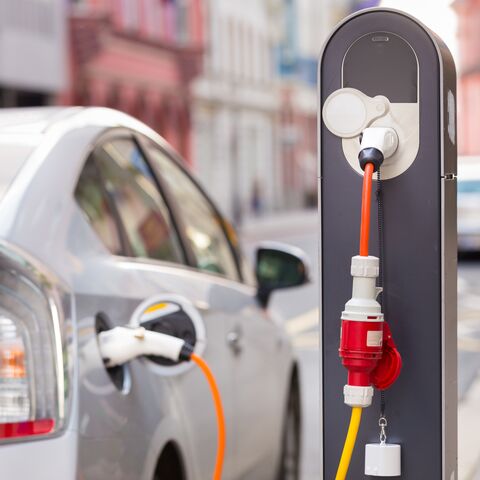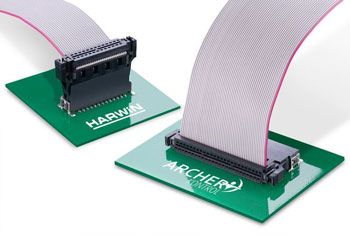Selecting the Right Interconnect Solutions for EV Powertrain Systems
By Giorgio Potenza, Head of Business Development EMEA
A combination of environmental and economic concerns is encouraging more and more car users to consider the move away from internal combustion in favour of electric-powered vehicles (EVs). Recent figures published by Bloomberg New Energy Finance highlight this. It now predicts that global plug-in passenger EV sales (just above 2 million annually in 2019) will reach a staggering 20.6 million by 2025.
The traditional automotive brands and new entrants will serve this rapidly expanding EV market, and all of them will be looking for ways to achieve these two fundamental objectives; safety and efficiency.
- Ensuring maximum safety is maintained – To avoid the risk of injury to occupants, protect the vehicle and the manufacturer's reputation.
- Making their vehicles perform as efficiently as possible – So that vehicle owners can avoid the inconvenience of recharging too often and can travel longer distances.
However, meeting these two objectives does pose complex challenges for the engineers tasked to deliver them. And achieving increasingly faster recharging times requires moving to higher voltages (800V). So because of this increasing complexity, the powertrain of any modern EV's design is critical. Therefore, manufacturers must develop highly sophisticated in-vehicle networking capabilities with the necessary monitoring and diagnostic functions.
Access to essential data
Electric powertrains need the necessary high-performance data acquisition infrastructure, making them efficient and safe. Through this infrastructure, the different powertrain elements are constantly monitored, with any indication of a problem flagged to the relevant electronic control unit (ECU), where appropriate corrective action is taken. In addition, as we will see, the constraints placed on EV designs mean that this infrastructure (and the components it uses) will need specific technical characteristics.
Critical elements of an EV powertrain
The six main systems found within or directly associated with an EV's powertrain are:
- The onboard charger (OBC) – Is responsible for providing charge to the battery by taking the AC mains supply and converting it into a suitable DC voltage.
- The battery pack – Where charged energy is stored, ready for delivery.
- The traction inverter – For converting the DC supply coming from the battery into an AC supply, which will then drive the EV's electric motor.
- The motor controller – Where digital circuitry takes the force applied to the vehicle's brake and throttle pedals by the driver, then translates them into commands that will result in changes to the motor's torque (to accelerate the vehicle or slow it down).
- The battery management system (BMS) monitors various parameters within the battery pack to keep each constituent cell running smoothly.
- The DC-DC converter – For stepping down the battery voltage so that it may be used for other functions (such as lighting, climate control, infotainment, etc.).
The OBC, BMS, traction inverter, motor drive, and motor controller must continuously transmit or receive real-time data to/from their supporting ECUs. This real-time data will give greater powertrain efficiency, longer vehicle operating lifespans, improved reliability, and higher degrees of safety.

EV data dependency
It is widely known that EV battery packs are made up of Li-Ion cells, and the prospect of them being a fire risk must be addressed. That is why constant monitoring of systems is vital. By acquiring real-time data from the cells, such as temperature, voltage, and current, the BMS knows the overall condition of the battery pack. It then ensures that each remains within its safe operating parameters.
Through its numerous diagnostic features, the BMS can detect any potential issues within any given cell that might result in possible overheating and take it offline (avoiding a dangerous thermal runaway situation). However, if a more serious problem occurs, where a large proportion of the battery pack is affected, it may be necessary for the vehicle to be shut down completely.
The BMS can also take care of cell balancing. There will be variations in cell construction throughout the battery pack, with some able to hold more charge than others. Cell balancing means the charge is better distributed throughout the battery pack, so the poorer performing cells will last longer.
For the other elements, such as the OBC, traction inverter, etc., data is needed so that they can quickly respond to changing circumstances within the powertrain. Like the BMS, they require high-speed connectivity supporting deterministic operation.
Essential interconnect requirements
Several essential attributes are required when using connectors in any automotive application. Firstly, space will be limited, so the dimensions of the connector components will need to reflect this but still offer high contact densities. At the same time, the selected connectors must have the robustness to cope with demanding automotive application settings. They must exhibit resilience when exposed to shocks, vibrations, and high temperatures. In addition, complete protection against dust and moisture ingress will be necessary.
Elevated data rates must also be supported, in line with modern in-vehicle networking requirements, and strong signal integrity also needs to be maintained (despite the electro-magnetically noisy ambient environment in which these connectors will be placed). In addition, it's recommended that mechanisms to prevent mating errors during assembly are included. Finally, the increasingly competitive nature of the EV business means that the connectors used must be competitively priced and not add too much to the total bill-of-materials costs.
Compact high-density interconnect solution
Several manufacturers have designed Archer Kontrol into the powertrains of their EV models, and Harwin is building a solid track record in this growing application. These highly reliable board-to-board connectors have been integrated into OBCs, motor controllers, and traction inverters. They give automotive engineers all the essential technical attributes needed in the data infrastructure that accompanies EV powertrains, and for buyers, they are well-positioned commercially. Plus, small form factors, with a choice of vertical and horizontal orientations, enable these 1.27mm pitch connectors to fit into tight spaces.
As well as a 125°C temperature rating (to withstand the heat inside powertrain modules), these components have outstanding resilience to vibrations (tested cyclically at 10-2,000Hz, 1.5mm, 198m/s² (20G), for 12 hours). Also, because they can transmit 3Gbps, they can easily support Ethernet-based in-vehicle networking data rates. Highly durable phosphor bronze contacts with a gold/tin finish are used. These contacts are embedded into rugged plastic housings rated to UL94V-0 against flammability.
Archer Kontrol connectors are fully shrouded (to prevent damage) and have polarisation built-in to protect against mis-mating on EV manufacturers' production lines. Stacking height options from 8mm to 20mm result in greater versatility, so suitable combinations can be found, and specific design layout requirements met. In addition, off-the-shelf cable assemblies are available (in 150mm and 300mm lengths), with added latches to provide strain relief.

Conclusion
The acquisition and transfer of real-time data are fundamental to long-term EV operation, delivering: greater powertrain efficiencies, extended battery lifespans, and higher safety levels. Harwin is working closely with many of the world's leading EV manufacturers – providing them with the connectors they need to make their powertrains attain the highest possible levels of performance. Through this continually evolving interconnect technology, and innovative new enhancements, the next generation of EVs will be even better positioned to meet market expectations.
